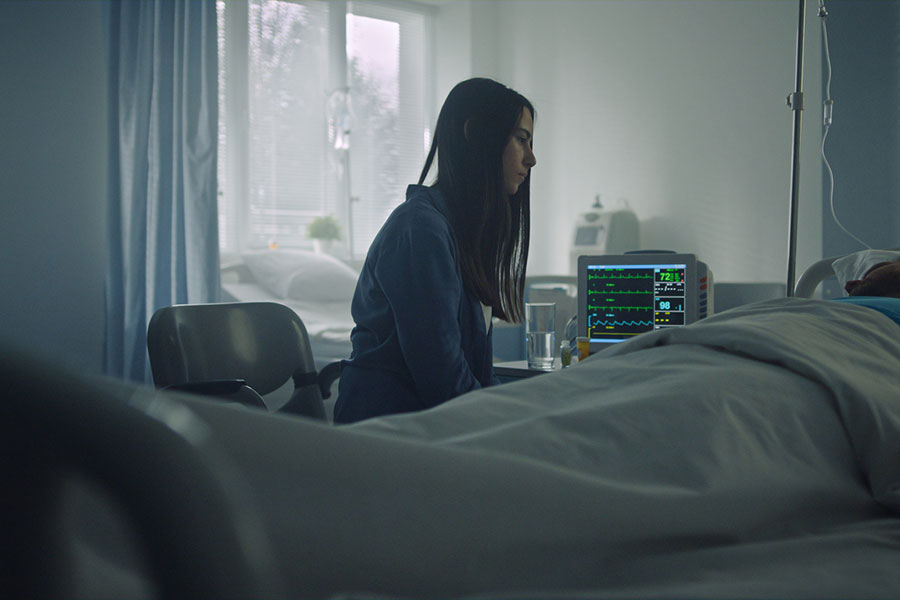Holding the line on brain death

How do we determine that someone has died? The Uniform Determination of Death Act (UDDA), which has been an important part of the medical and legal landscape in the U.S. for more than 40 years, states:
"An individual who has sustained either irreversible cessation of circulatory and respiratory functions or irreversible cessation of all functions of the entire brain, including the brainstem, is dead. A determination of death must be made in accordance with accepted medical standards."
The UDDA, originally drafted in 1981 by a special Presidential Commission, was designed to serve as a legal standard and a uniform framework for determining that someone has died, as well as to provide a clear legal foundation for declaring someone dead by means of “neurological criteria,” also known as “brain death.”
Since that time, the UDDA has served as an important benchmark for the medical profession, and a point of reference for legislative standards adopted throughout the United States, with all 50 states relying on language borrowed from the UDDA in their legal definitions of death.
Clearly defining and ascertaining when someone has died is important for a number of reasons: grieving can begin; burial arrangements can be made; and organ procurement can take place if the person had indicated a desire to become a donor. Most importantly, establishing that someone has not yet passed on helps us provide appropriate care and medical treatments until the time of death.
Recently, a group of physicians, ethicists, and lawyers recommended revising the wording of the UDDA. Their proposal adjusts the definition of brain death from whole-brain death to less-than-whole-brain death.
Whenever brain death assessments are done today, physicians carry out a series of bedside clinical tests. They check whether the patient can gasp or initiate a breath when taken off the ventilator (known as an “apnea test”). Any attempt at taking a breath would indicate that the person’s brainstem is still functioning, and that he or she is still alive. Physicians also check for other reflexes and responses mediated by the brain: Do pupils of the eye respond to light? Is there any reaction to, or withdrawal from painful stimuli? Is there any gag reflex when an object is placed in the back of the throat? If such reflexes are present, the individual is still alive.
For somebody to be deceased, then, there needs to be evidence of a catastrophic neurological event that has caused their brain to become irreversibly nonfunctional. One type of brain function that is not routinely assessed by doctors when carrying out brain death testing involves the hypothalamus. This important region of the brain coordinates with the pituitary gland to enable the secretion of hormones and small molecules that regulate the function of the kidneys and other organs and helps control salt and water balance in the body. Sometimes a person can pass all the tests for being brain dead, but still have hypothalamic function.
If a patient has continuing hypothalamic function in this way, it seems clear that he or she does not manifest “irreversible cessation of all functions of the entire brain” as delineated in the UDDA.
Regrettably, some are now proposing that a person in this situation should still be considered brain dead, and they are seeking to revise the wording of the UDDA to reflect this, substantially lowering the standard for a declaration of brain death. They declare, without compelling support, that the persistence of neurosecretory function by the hypothalamus is consistent with brain death.
In cases of genuine brain death, when all functions of the entire brain have ceased, the bodies of these individuals can typically continue to function on a ventilator only for a matter of hours or perhaps a few days before their various subsystems, like blood pressure, electrolytes, and fluid balance become erratic and dysregulated, leading to cardiac arrest.
Meanwhile, some brain-injured individuals who have retained hypothalamic functioning have survived for months or years on a ventilator after losing both their brain-mediated reflexes and their ability to breathe. Even though these patients suffer an extremely severe central nervous system injury, they are clearly still alive.
Even to be “slightly alive” is still to be alive. If the language of the UDDA ends up being changed to allow for a declaration of brain death even with continued hypothalamic functioning, individuals who are not-quite-dead will be treated as if they were already dead.
Rather than revising the language of the UDDA and seeking to lower the standards for declaring brain death, the battery of routine reflex and apnea tests used for ascertaining brain death needs be expanded to include tests that can verify the loss of hypothalamic function.
Such improvements in testing will help ensure that people are not declared deceased prematurely. It will also help strengthen public confidence in the life-saving work of organ transplantation.

Rev. Tadeusz Pacholczyk, Ph.D. earned his doctorate in neuroscience from Yale and did post-doctoral work at Harvard. He is a priest of the diocese of Fall River, MA, and serves as the Director of Education at The National Catholic Bioethics Center in Philadelphia.
